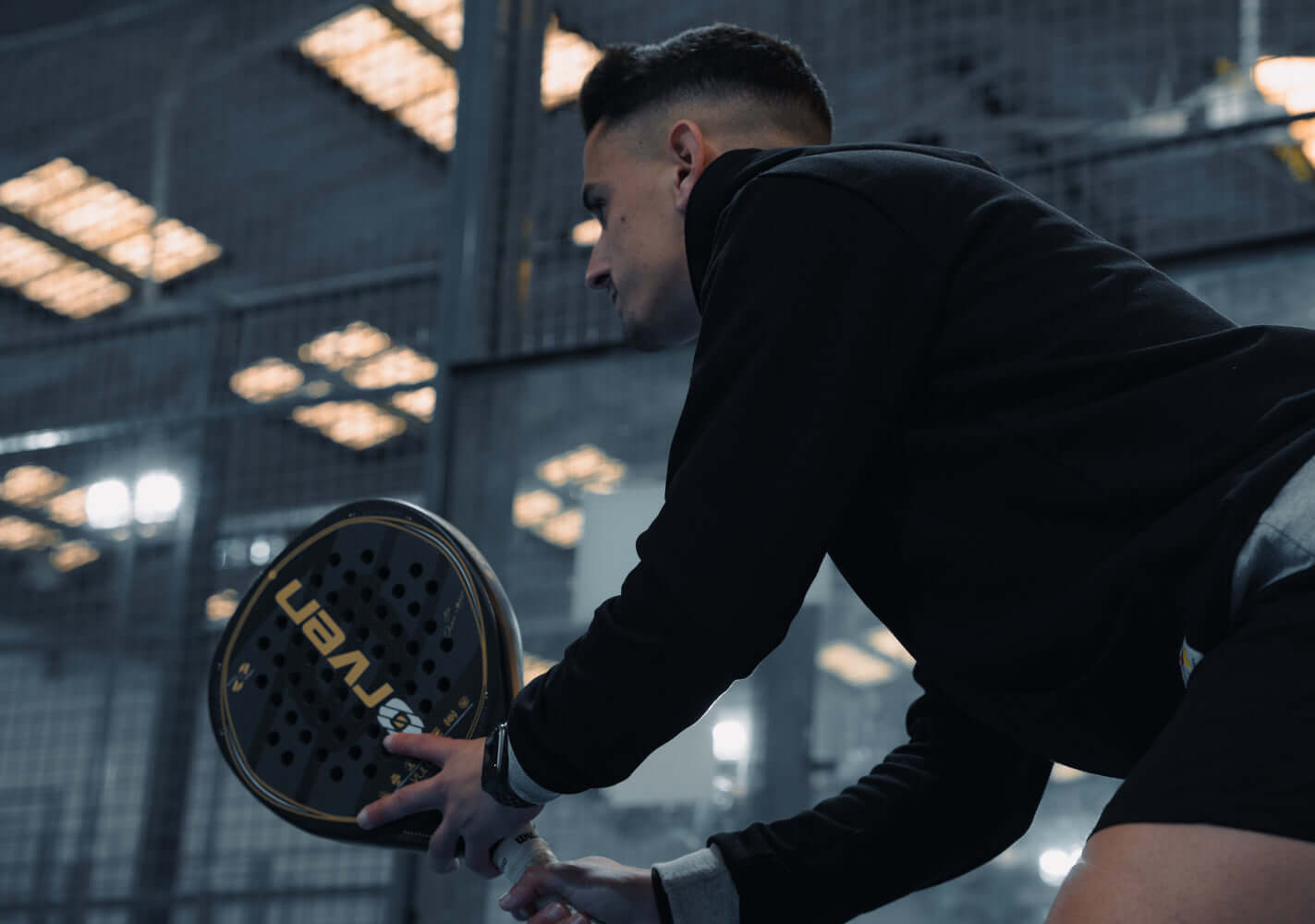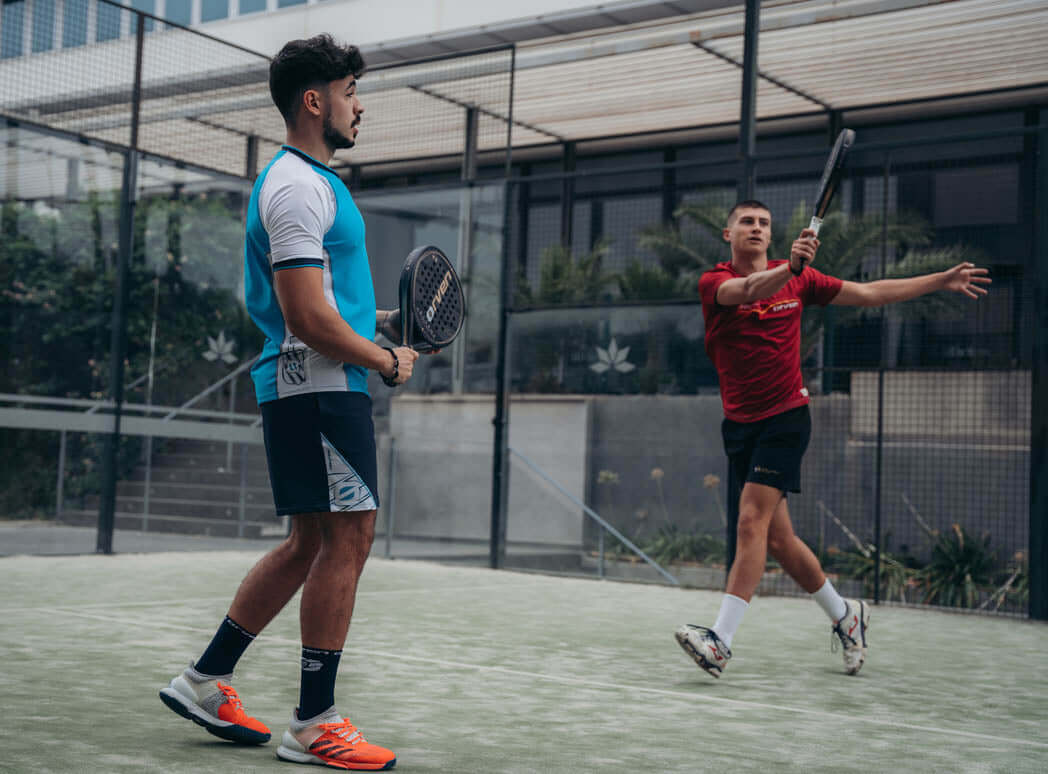Surely you are looking for tips and tricks to improve in paddle tennis, this sport recognized as the fastest growing sport in the world, paddle tennis is enormously popular among people of all ages and sports abilities. The fun and relatively simple nature of the game is perfect for those looking for a social sport and not have to worry about fierce competition or learning complex new skills.
However, as much as we all love a friendly game for fun, there's nothing quite like the feeling of winning.
Although there is nothing better than practicing the old-fashioned way, there are several padel tips, tricks and techniques that can help you improve your game. In this post, we have put together some essential tips to boost your skills and have you winning matches in no time.
Tips for the paddle tennis racket
Having a good paddle tennis racket can make a difference in your game. Although beginners and casual players can usually get by with a lender, those who want to play at their best level will have to get their own.
As you play and become more familiar with your racket, you'll learn what to expect with each stroke, which in turn will make you a better player. In this article you will see some tips and tricks to improve in paddle tennis
Choice of paddle tennis racket
Ideally, when buying a paddle tennis racket, you choose one made of EVA or foam. The perforated surface is also important as it can help you with impact, balance, control and maneuvering during the game.
There are three main shapes you can choose from: round, diamond, and teardrop. If you are starting, the ideal is a round racket.
You should also take into account your playing technique, position, weight and level.
Maintenance
Proper care of your racket is essential to avoid frequently having to buy a new one.
To keep your racket lasting and serving you (pun intended), follow these tips:
Respect the paddle tennis racket and do not throw it carelessly.
- Use a bag and racket protector.
- Protect it from extreme weather conditions and store it well.
- Replace the grip frequently, rather than the entire racket.
- Grip
- Master the continental grip to ensure flexibility of wrist movements and prevent the development of tennis elbow. Also known as the hammer grip, it's as simple as gripping the racket like a hammer.
As you gain experience, you can try slightly modifying the grip for specific shots, as well as varying the grip size if you find the standard grip uncomfortable.
Tips for the different plays
Although each stage of the game can be incredibly complex at the highest level, the following tips can help any beginner improve their game.
Watching videos of professional matches or certain techniques can help you understand the theory behind a certain move, while learning new ones. So you can apply them to your own game to continue improving.
If you want to see how the pros do it, consider watching the World Padel Tour or following the International Padel Federation.
Tips for serving
A good track start can give you an advantage and keep your opponents in the rear. Use the following tips to improve your service.
Keep your feet behind the service line.
- Don't let the ball go past your waist.
- Approach the network only after finishing your service.
- Understand your position and form.
- Don't be afraid to try new serve techniques as long as they are within the rules of the game.
- Discuss and apply the strategies with your teammate.
- Learn to serve diagonally.
Tips for receiving and returning the serve
It is important to accurately receive and return the ball to avoid losing points. The following tips can help you.
Learn to make a lob
Lobs are an incredibly useful technique that most casual gamers don't take advantage of. By tossing the ball into the air, you force your opponents to wait for it to come down before you can hit it back.
This can help you slow down the game if your opponents are being too offensive, give you time to position yourself better, or just make it harder for your opponents to return, as overhead shots are some of the hardest to master.
Know when to turn
Beginning players and those coming from tennis are often hesitant to turn around when the ball is about to hit the wall. You'll see them walk away from the ball, let it bounce, and then try to come back.
Walking away is a valid tactic and has its uses, but so is turning away. Spinning is much faster, allows you to get closer to your preferred position, and can allow you to hit the ball at a better angle. Master your spins and you'll be unstoppable on the courts!
Don't be afraid of the walls
Although it may seem scary to let the ball go past you and hit the wall, especially if you are coming from a tennis background, walls are an incredibly useful tool in padel.
When the ball bounces off the wall, it loses speed and starts heading towards your opponent. This makes it much easier to line up a shot. Remember that if you don't use the walls, you are only using half of the tools at your disposal to win the game.
Posture and positioning
Learn to position yourself and maintain proper form so you can move easily around the court. Check out some tips below.
Position
Over the course of a match, you'll find yourself in hundreds of different positions, but they can generally be divided into two categories, backcourt and net.
The backcourt position is the starting position for returns, and one of the best positions if your opponents are close to the net, as it will give you more time to return the ball. The ideal position is one step back from the service line and two steps back on the field side.
The net position is one of the most advantageous for attacking, as you can return the ball quickly without letting your opponents catch their breath. However, it is easy to get too close and be outplayed for a serve. We suggest standing more or less level with the second fence post and stepping forward or back as necessary.
footwork
Footwork is one of the most important components of paddle tennis. The basic footwork technique for beginners is called the split step. It consists of staying on the balls of your feet at all times and jumping slightly when the opponent hits the ball.
This creates tension in the calves and allows you to move explosively where you need to go.
Knees
Ideally, players should maintain a slight squat position throughout the game. Keeping your knees bent while standing or moving makes you more agile and ready to change direction in no time.
New players are often seen standing almost completely upright and bending their backs when they need to hit a low shot. Bending the knee is much faster and more comfortable. It allows you to return the ball more effectively and safely as you reduce the risk of overextending your arms or back.
Coordination
Coordination is essential for paddle tennis. As the ball gets closer to you, you have to adjust your body in order to hit it effectively. Unfortunately, it is very difficult to teach coordination, it is something that develops as you play.
As you gain experience in the game, you'll begin to get a sense of timing for knowing when to hit the ball, allowing you to put more power and precision into every swing.
This can also apply to coordinating movements with your teammate. If you're having trouble lining up shots or getting in your partner's way, consider joining a padel club and playing regularly to hone your skills.





Leave a comment
This site is protected by hCaptcha and the hCaptcha Privacy Policy and Terms of Service apply.